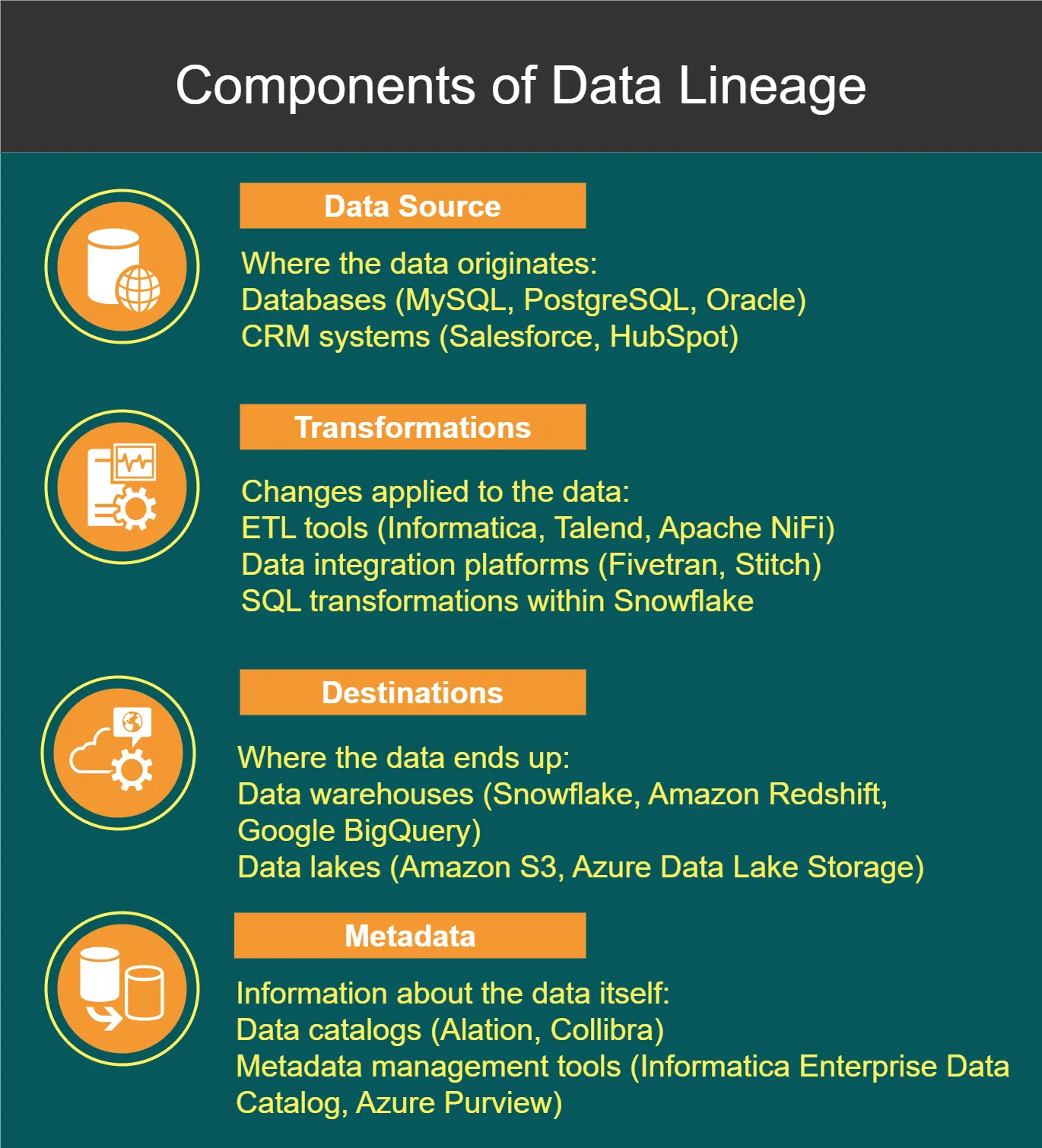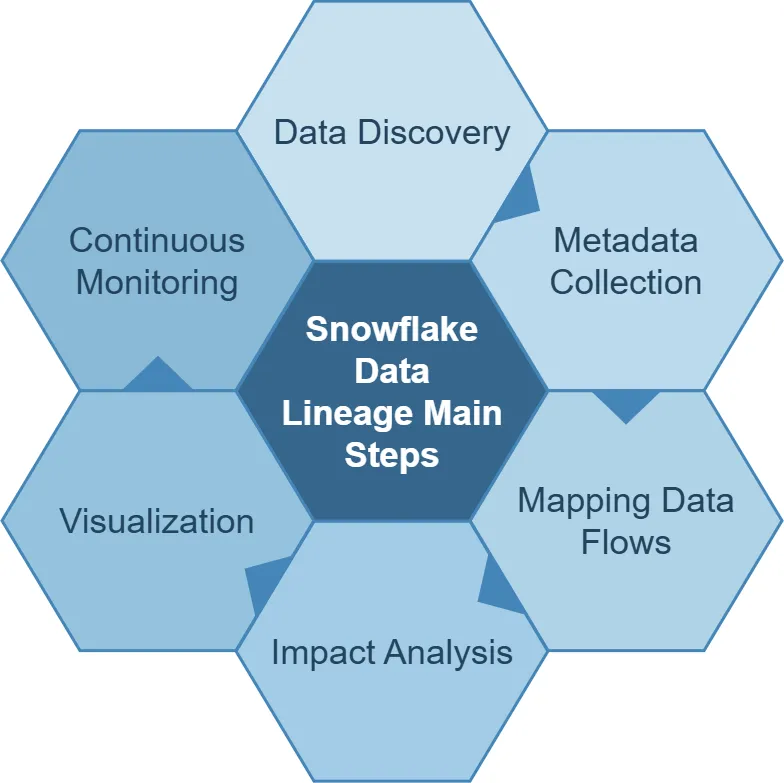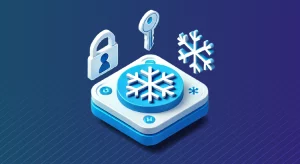
Data Lineage with Snowflake for Better Data Management
Introduction
In today’s data-driven world, understanding the journey of your data is crucial. Enter data lineage, a powerful concept that’s revolutionizing how organizations manage and utilize their data assets. This article explores data lineage, focusing on its use in Snowflake, a top cloud data platform.
Businesses are relying more on data for decision-making. Transparency and traceability in data processes are now more important than ever. Data lineage provides this visibility, offering a clear picture of data’s origin, transformations, and ultimate use. But how does this fit into the broader scope of data management, and what steps are involved in establishing effective data lineage?
We’ll examine the significance of data lineage in modern data ecosystems and how organizations utilize it within Snowflake’s framework. Join us for this discussion!
What is Data Lineage?
Data lineage is the life cycle of data. It includes the data’s origins and where it moves over time. This concept provides visibility into the data analytics pipeline and helps trace errors back to their sources.
Key Components of Data Lineage
Please see the picture below for the details:

Data lineage tracks these components, creating a map of data’s journey through systems.
A Crucial Part of Data Management
Data lineage is indeed an integral part of data management. It falls under the broader umbrella of data governance, which encompasses the overall management of data availability, usability, integrity, and security.
Why Data Lineage Matters in Data Management
- Improved Data Quality: By tracking data from source to destination, organizations can identify and rectify errors quickly.
- Enhanced Compliance: Data lineage helps meet regulatory requirements by providing a clear audit trail.
- Better Decision Making: Understanding data’s origin and transformations leads to more informed business decisions.
- Increased Efficiency: Tracing data lineage can streamline processes and reduce redundancies.
The Main Steps of Data Lineage
Implementing data lineage involves several key steps:

1. Data Discovery
This initial step involves identifying and cataloging all data assets within an organization. It’s crucial to understand what data exists and where it resides.
2. Metadata Collection
Gathering metadata about each data asset is essential. This includes information about data sources, schemas, and transformations.
3. Mapping Data Flows
This step involves tracing how data moves through various systems and processes. It’s about understanding the journey of data from its source to its final destination.
4. Impact Analysis
Once data flows are mapped, organizations can analyze how changes in one part of the system might affect other areas.
5. Visualization
Creating visual representations of data lineage helps stakeholders understand complex data relationships more easily.
6. Continuous Monitoring
Data lineage isn’t a one-time effort. It requires ongoing monitoring and updates to reflect changes in data flows and systems.
Data Lineage in Snowflake
Snowflake, a cloud-based data platform, offers robust features for implementing and managing data lineage. Let’s explore how Snowflake supports this crucial aspect of data management.
Snowflake’s Approach to Data Lineage
Snowflake provides built-in capabilities for tracking data lineage, primarily through its metadata layer and query history features.
Example: Tracking Query History
To view the lineage of a specific table, you can use Snowflake’s query history:
SELECT * FROM TABLE(INFORMATION_SCHEMA.QUERY_HISTORY_BY_SESSION()) WHERE QUERY_TEXT LIKE '%YOUR_TABLE_NAME%' ORDER BY START_TIME DESC;
This query returns a list of all operations performed on the specified table, helping you trace its lineage.
Snowflake Horizon: Enhancing Data Lineage
Snowflake Horizon, a suite of governance features, further enhances data lineage capabilities. It provides a comprehensive view of data assets and their relationships.
Key Features of Snowflake Horizon for Data Lineage
- Automated Lineage Tracking: Horizon automatically captures and visualizes data lineage across your Snowflake account.
- Cross-Database Lineage: It can track lineage across different databases within your Snowflake environment.
- Integration with External Tools: Horizon can integrate with third-party data catalogs and governance tools.
Implementing Data Lineage in Snowflake: A Step-by-Step Guide
Let’s walk through the process of setting up and utilizing data lineage in Snowflake.
Step 1: Enable Account Usage
First, ensure that Account Usage is enabled in your Snowflake account. This feature provides access to metadata about your Snowflake usage.
USE ROLE ACCOUNTADMIN; GRANT IMPORTED PRIVILEGES ON DATABASE SNOWFLAKE TO ROLE SYSADMIN;
Step 2: Create a Lineage Database
Next, create a dedicated database for storing lineage information:
CREATE DATABASE DATA_LINEAGE; USE DATABASE DATA_LINEAGE;
Step 3: Set Up Lineage Tables
Create tables to store lineage information:
CREATE TABLE DATA_SOURCES ( SOURCE_ID INT AUTOINCREMENT, SOURCE_NAME VARCHAR(255), SOURCE_TYPE VARCHAR(50), CREATED_AT TIMESTAMP_LTZ DEFAULT CURRENT_TIMESTAMP() ); CREATE TABLE DATA_TRANSFORMATIONS ( TRANSFORM_ID INT AUTOINCREMENT, SOURCE_ID INT, TARGET_ID INT, TRANSFORMATION_TYPE VARCHAR(50), QUERY_ID VARCHAR(50), CREATED_AT TIMESTAMP_LTZ DEFAULT CURRENT_TIMESTAMP(), FOREIGN KEY (SOURCE_ID) REFERENCES DATA_SOURCES(SOURCE_ID), FOREIGN KEY (TARGET_ID) REFERENCES DATA_SOURCES(SOURCE_ID) );
Step 4: Populate Lineage Data
Use Snowflake’s query history to populate your lineage tables:
INSERT INTO DATA_SOURCES (SOURCE_NAME, SOURCE_TYPE)
SELECT DISTINCT TABLE_NAME, 'TABLE'
FROM INFORMATION_SCHEMA.TABLES
WHERE TABLE_SCHEMA = 'PUBLIC';
INSERT INTO DATA_TRANSFORMATIONS (SOURCE_ID, TARGET_ID, TRANSFORMATION_TYPE, QUERY_ID)
SELECT
s.SOURCE_ID,
t.SOURCE_ID,
'INSERT',
qh.QUERY_ID
FROM
TABLE(INFORMATION_SCHEMA.QUERY_HISTORY()) qh
JOIN DATA_SOURCES s ON qh.QUERY_TEXT LIKE CONCAT('%FROM%', s.SOURCE_NAME, '%')
JOIN DATA_SOURCES t ON qh.QUERY_TEXT LIKE CONCAT('%INSERT INTO%', t.SOURCE_NAME, '%')
WHERE qh.QUERY_TYPE = 'INSERT';Step 5: Visualize Data Lineage
While Snowflake doesn’t provide built-in visualization tools for data lineage, you can use the collected data to create your own visualizations or integrate with third-party tools.
Best Practices for Data Lineage in Snowflake
To maximize the benefits of data lineage in Snowflake, consider these best practices:
- Consistent Naming Conventions: Use clear, consistent names for databases, schemas, and tables to make lineage tracking easier.
- Regular Audits: Periodically review and update your lineage information to ensure accuracy.
- Leverage Snowflake Features: Make full use of Snowflake’s native features like time travel and query history for comprehensive lineage tracking.
- Integrate with Data Catalogs: Consider integrating Snowflake with data catalog tools for enhanced metadata management.
- Automate Lineage Tracking: Implement automated processes to update lineage information as data flows change.
Challenges and Solutions in Implementing Data Lineage
While data lineage offers numerous benefits, its implementation can present challenges. Here are some common issues and their solutions:
Challenge 1: Complex Data Ecosystems
Many organizations have intricate data ecosystems with multiple sources and destinations.
Solution: Start small by focusing on critical data assets. Gradually expand your lineage tracking as you refine your processes.
Challenge 2: Manual Tracking
Manual tracking of data lineage can be time-consuming and error-prone.
Solution: Leverage Snowflake’s automated features and consider investing in specialized data lineage tools that integrate with Snowflake.
Challenge 3: Maintaining Up-to-Date Lineage
Data flows can change rapidly, making it difficult to keep lineage information current.
Solution: Implement automated triggers in Snowflake to update lineage information whenever significant data operations occur.
The Future of Data Lineage in Snowflake
As data management continues to evolve, so does the role of data lineage. Snowflake is at the forefront of this evolution, continually enhancing its data lineage capabilities.
Emerging Trends
- AI-Driven Lineage: Machine learning algorithms may soon automate complex lineage mapping tasks.
- Real-Time Lineage: As businesses move towards real-time analytics, expect to see advancements in real-time lineage tracking.
- Enhanced Visualization: More sophisticated visualization tools are likely to emerge, making data lineage more accessible to non-technical users.
Conclusion
Data lineage in Snowflake is a powerful tool that helps organizations understand and manage their data assets more effectively. Data lineage improves data quality, compliance, and decision-making by showing where data comes from and how it is used.
To set up data lineage in Snowflake, you must follow a few steps. These steps include enabling account usage and setting up lineage tracking systems. While challenges exist, the benefits far outweigh the difficulties, especially when best practices are followed.
In an era where data is a critical business asset, mastering data lineage is no longer optional—it’s essential. Snowflake is improving its data lineage capabilities.
Snowflake is enhancing its ability to track data lineage. This will help organizations make better use of their data. As a result, they can drive innovation and gain a competitive edge in a data-focused environment.
For those seeking advanced tools to complement Snowflake’s data lineage capabilities, consider exploring DataSunrise’s user-friendly and flexible solutions for database security and compliance. Visit the DataSunrise website for an online demo and discover how our tools can enhance your data management strategy
